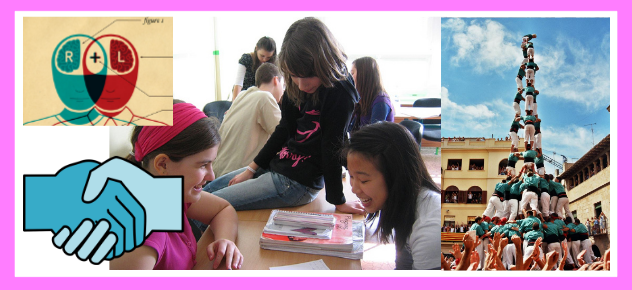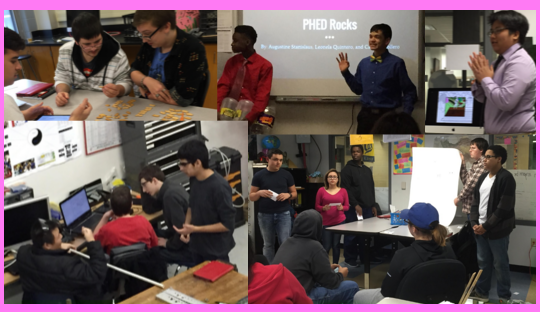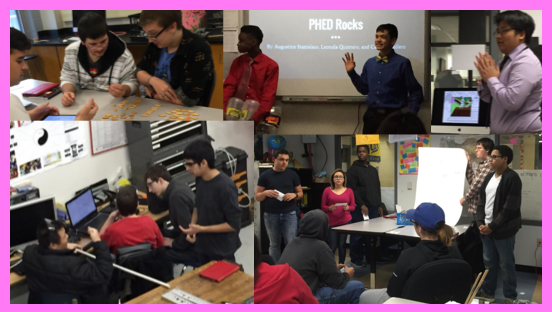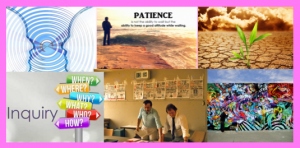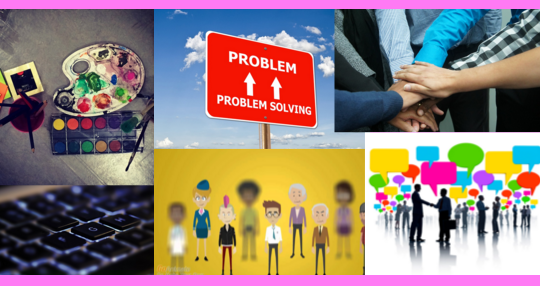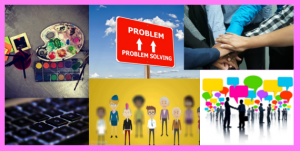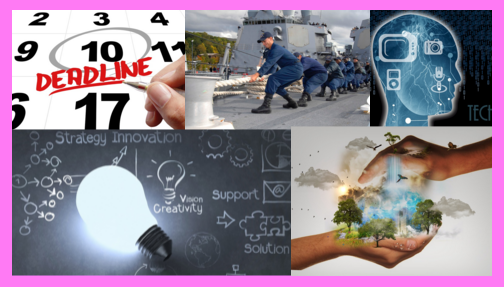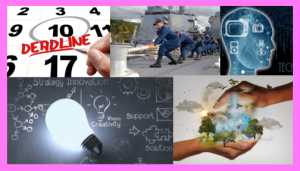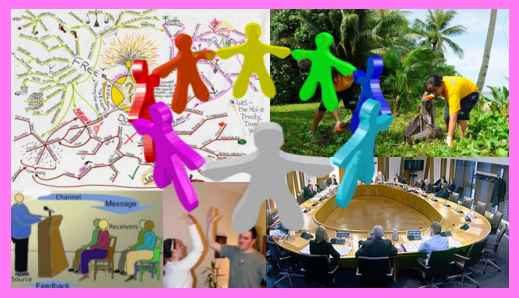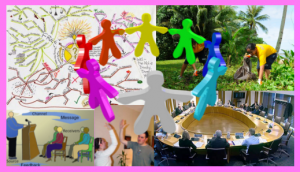
- What this is:
- Groups of 4 to 6 students who are informally gathered in order to quickly discuss a couple questions prior to sharing responses to the whole class.
- The buzz group discussions are aimed at exchanges of ideas, not at developing consensus.
- Preparation:
- Design discussion prompts that are aimed at uncovering concepts, not facts and that can stimulate open-ended discussions.
- Procedure:
- Forms groups, announce norms and time limits.
- Ask group members to exchange ideas in response to prompts.
- Check in on teams to see if time limits are too long or too short.
- Ask students to share their key ideas to the whole group.
- Online implementation
- Set up discussion forums for each prompt.
- Require students to respond twice in each forum – once to the original prompt and once to another student’s response
- Variations and Extensions:
- Ask students to use buzz groups to generate questions, share information, or solve problems.
- Hold more relaxed buzz groups that do not respond to specific prompts, but discuss assigned readings in general or general course topics.
- Snowball discussion – At the conclusion of each buzz group discussion, have 2 buzz groups combine and engage in a larger group discussion. Then have these combine and discuss until the whole group = whole class.
- Implementation Tips:
- To avoid students going off on tangents, use engaging prompts and time limits.
- Be prepared to follow up buzz group discussion with related key issues – in case these issues did not come up in buzz group discussions.
- Snowball Discussion tip – announce the format ahead of time and its purpose – to generate a lot of ideas in a short amount of time
- Ask each buzz group to report out their most important idea that was not already mentioned by another buzz group representative
- If buzz groups addressed different prompts, a member from each buzz group can form a panel. The class can question the panel in order to learn the ideas generated by each buzz group.
- Following buzz groups, follow up with Directed Paraphrasing. Ask them to summarize the key points of the discussion for a student who was absent that day.
- What this is:
- Students are each given a set number of chips.
- They participate in discussions by surrendering one chip each time they speak. They can only speak while they have chips.
- Preparation:
- Gather chips – playing cards, poker chips, paper clips, etc.
- Design a discussion prompt that can stimulate open discussion.
- Procedure:
- Form student groups. Hand out 3 – 5 chips per student.
- Ask students to participate equally in the discussion and use the chips to track each person’s contributions. Each participant surrenders 1 chip per contribution and can not talk after he or she runs out of chips.
- When the chips are done, can redistribute chips and repeat protocol with another discussion prompt.
- Online implementation
- Waiting for all students to respond prior to leaving another comment can be very inconvenient and unwieldy.
- Instead, set ground rules for the number of length of responses and enforce repeated violations with private messages.
- Variations and extensions
- Give each student chips of a different color. Ask students to examine the colors in surrendered chips and reflect on how discussion has gone.
- Can suggest that students current a chip every 3 to 5 minutes in the discussion
- Give each student 1 chip and do not redistribute chips until all are surrendering. This version could be good for brainstorming discussions.
- Instead of chips, assign a record to keep a tally of students’ responses using a tally checklist.
- Implementation tips
- This protocol can be good to structure discussions on controversial topics and within teams that do not tend to have full participation of all team members in team discussions.
- Use this protocol to build insight into the ways teams have discussions
- Use sparingly because it can lead to superficial conversations if overused.
- After the discussion, have students write a reflective essay that has them reflect on their performance during the discussion and set goals for improvement.

Structuring discussions to ensure active participation by ALL students can have numerous benefits for students. Students can learn how to explain and clarify their ideas, become aware of their assumptions, learn multiple perspectives, and connect new and prior knowledge. Teachers can encourage students who are used to having a passive role in learning activities to become active participants of discussions by implementing protocols that promote active participations for ALL.

- Decide what learning activities can benefit from discussions
- Select the discussion style that goes best with the type of ideas targeted for discussion
- Design a discussion prompt that can elicit multiple responses
- Design a followup activity that can be used to process ideas generated by discussions
- Implement the discussion protocol of your choice
- Implement another activity that promotes reflection upon or furthering processing of information gathered by discussion activity
- Decide which discussion protocols are the most effective tools to practice speaking / thinking in the targeted discipline and incorporate these into class routines
- Use student feedback to refine implementation of protocols


 Chapter 7 from
Chapter 7 from 

